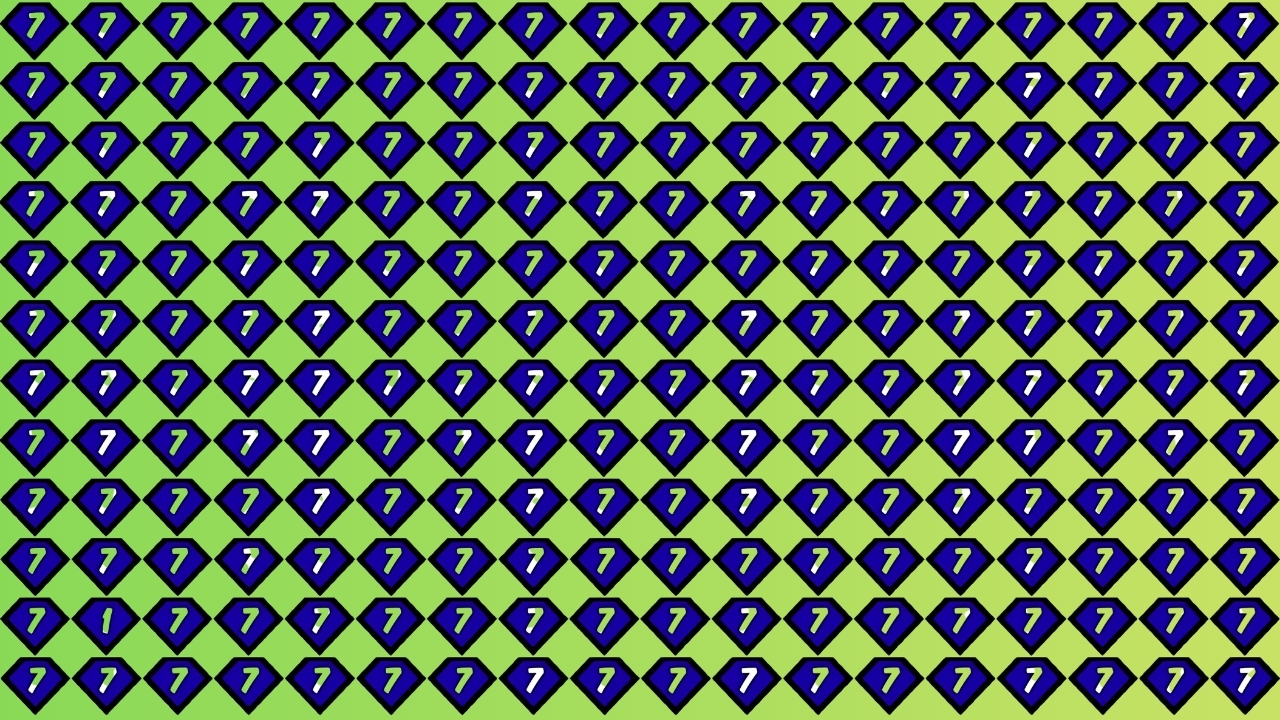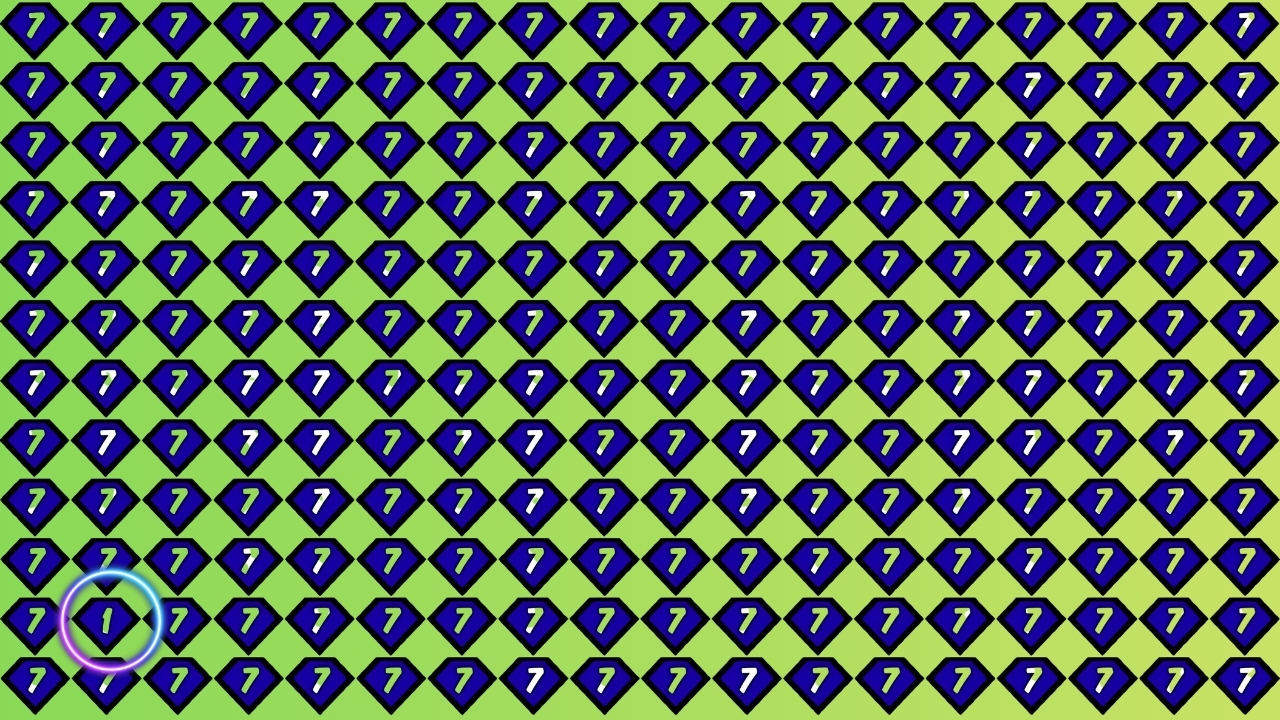Hidden Number 1 : Have you ever stared at an image so intently that your eyes started watering, only to suddenly spot something that was hiding in plain sight all along? Welcome to the fascinating world of optical illusions, where your brain becomes both detective and suspect in a visual mystery.
What Makes This Challenge So Addictive?
Picture this: you’re scrolling through your feed when you encounter a seemingly simple grid filled with the number 7. Dozens, maybe hundreds of sevens staring back at you. But somewhere in that sea of identical digits, a sneaky number 1 is playing the ultimate game of hide-and-seek. Your mission? Find it in just 5 seconds.
Sounds easy, right? Think again.

This particular optical illusion taps into something fascinating about how our brains process visual information. When we see repetitive patterns, our minds essentially go on autopilot, scanning for sameness rather than differences. It’s like trying to spot a single red apple in an orchard full of red apples – your brain expects uniformity, so it glosses over subtle variations.
Why Your Brain Struggles With This Task
Let’s break down what’s happening in your head during these challenges. Your visual system is incredibly sophisticated, processing millions of bits of information every second. But it also takes shortcuts to keep you from getting overwhelmed. These shortcuts, called cognitive biases, usually help us navigate daily life efficiently.
However, when it comes to spotting hidden numbers, these same helpful shortcuts work against us. Your brain sees the first few sevens and essentially says, “Got it, this is a field of sevens,” then stops looking carefully at individual characters. The number 1, despite being right there in front of you, becomes invisible because it doesn’t match your brain’s established pattern.
Think of it like this: if you’re looking for your friend in a crowd of people wearing red shirts, and your friend is also wearing red, your eyes might skip right over them because they blend into the expected pattern.
The Science Behind Visual Search
Researchers have studied this phenomenon extensively, and it turns out there are two main types of visual search happening in your brain. The first is called “parallel processing” – your eyes quickly scan everything at once, looking for obvious differences. This works great when you’re looking for something completely different, like finding a yellow banana among red apples.
The second type is “serial processing” – methodically examining each item one by one. This is what you need for finding that hidden 1 among the 7s, but it’s much slower and requires conscious effort. Most people instinctively use parallel processing first, which is why the 5-second time limit makes this challenge so tricky.
Strategies That Actually Work
Now for the good stuff – how can you get better at these challenges? Here are some techniques that puzzle enthusiasts swear by:
The Systematic Sweep: Instead of randomly scanning, try moving your eyes in a deliberate pattern – left to right, top to bottom, like reading a book. This ensures you actually look at each number rather than letting your brain fill in the blanks.
The Unfocus Technique: This might sound counterintuitive, but try slightly unfocusing your eyes, like you’re looking through the image rather than at it. Sometimes the different shape of the hidden number becomes more apparent when you’re not focusing too hard on individual digits.
The Corner Strategy: Many puzzle creators place hidden elements near edges or corners because these areas get less attention during quick scans. Start your search in these overlooked zones.
Change Your Perspective: Literally. Tilt your head or view the image from a different angle. This forces your brain to process the visual information differently and can reveal patterns you missed before.
Beyond the Fun Factor
While these challenges are entertaining, they also serve as fascinating windows into how our perception works. They remind us that seeing isn’t just about our eyes – it’s about how our brains interpret and make sense of visual information.
These puzzles can actually help improve your attention to detail and visual processing skills. Some researchers even suggest that regularly engaging with optical illusions and visual puzzles might help maintain cognitive sharpness as we age.
Optical Illusion Answer

There’s something uniquely satisfying about finally spotting that hidden number after staring at an image for what feels like forever. Even better is sharing the challenge with friends and watching them go through the same frustrating-yet-exciting journey you just experienced.
These optical illusion challenges have become a form of social currency online, sparking conversations and friendly competitions. They remind us that despite all our technological advances, our brains still work in wonderfully mysterious ways that can surprise and delight us.
So the next time you encounter one of these visual puzzles, remember: you’re not just hunting for a hidden number – you’re exploring the fascinating quirks of human perception. And if you find it within 5 seconds? Well, that just means your brain’s pattern-breaking skills are particularly sharp that day.
ALSO READ: Optical Illusion: Find the 3 Differences in Monkey Image